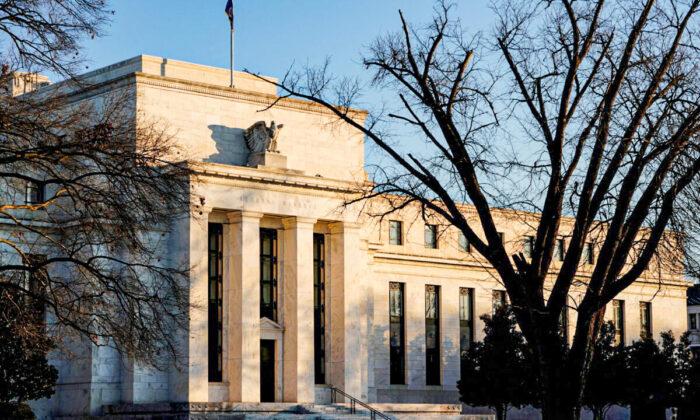Investors betting on higher inflation and a weaker dollar are about to be very wrong. Money poured into risk assets on the assumption that the Federal Reserve is printing money through its quantitative easing program, which couldn’t be further from the truth. The dollar is about to shoot higher, and investors are completely unprepared for the carnage it will do to risk assets.
The Federal Reserve has neither the tools nor the ability to print money. Quantitative easing is nothing more than a reserve swap with the large commercial banks, which is designed to reduce the marketable supply of Treasury securities and to strengthen the dollar. Fiscal stimulus isn’t money-printing either, as the U.S. Treasury only can borrow, and not print, money.
While most investors are bearish on the dollar and believe it will fall significantly in value, there’s an interesting relationship between the dollar and the Fed’s balance sheet. The value of the dollar tends to lag the Fed’s balance sheet or monetary base. As the Fed expands its balance sheet through quantitative easing, the dollar eventually follows it higher.
The reason the dollar rises as the Fed expands its balance sheet is due to the mechanics of quantitative easing, which are broadly misunderstood by most investors, professional money managers, and pundits. One of the purposes of quantitative easing is to limit the velocity of the dollar, or the number of times it can be used in a transaction, by locking it up in the commercial banking system.
When the Fed purchases a Treasury or mortgage-backed security from a commercial bank through quantitative easing, the commercial bank receives a reserve asset. Reserve assets, which are the byproduct of the reserve swap between the Fed and the large commercial banks, become trapped in the commercial banking system.
These reserve assets, which are held at a Federal Reserve member bank in the name of the commercial bank, can’t leave the financial system. They can be used to settle overnight intrabank transfers, as a deposit at a Treasury auction, and as collateral against a loan. Since there are a small number of commercial banks these reserve assets can move between, their mobility is severely limited.
One of the reasons the Fed engages in quantitative easing is to increase the value of the dollar by limiting its mobility. Since the Fed can’t create dollars, it also can’t destroy them. The Fed does have the means to reduce or increase the mobility of dollars by expanding or contracting its balance sheet. Yet, during the pandemic, the dollar fell in value, which supports the broadly held view that quantitative easing leads to a weaker dollar.
The reason the dollar fell during the pandemic is due to the closing of the U.S. economy to the outside world. As the U.S. government borrowed dollars and gave them to consumers and businesses, the dollar weakened as the number of dollars inside the U.S. increased. Without a means for those dollars to escape into the global economy, they were partially responsible for the rapid increase in inflation.
As the world’s reserve currency, the United States must export dollars or inflation. Dollars are exported primarily through global trade and as Americans travel abroad. When global trade ground to a halt, the United States became a net importer of dollars, which led to a rapid rise in producer and consumer prices.
As the global economy reopens, the United States is once again exporting dollars, as evident by the massive inflow of foreign-produced goods that are causing a major backlog at U.S. ports. While some of these dollars are flowing back to the United States through foreign purchases of U.S. Treasury securities, it’s not enough to replace the damage done by quantitative easing.
Even though the Fed will soon start tapering its asset purchases with the intent of ending its latest iteration of quantitative easing by mid-2022, a large number of dollars remains trapped in the commercial banking system. These dollars will remain trapped in the commercial banking system until the Fed reduces its balance sheet through quantitative tightening, which it’s unlikely to do. The reason the dollar is going to rise is due to the Fed artificially reducing the supply of dollars in the financial system by trapping trillions of them in the commercial banking system.
What the Fed did was create a dollar shortage by trapping trillions of dollars in the commercial banking system. As the global economy reopens, the demand for dollars will increase due to the dollar being the global reserve currency.
Investors who are betting on a weaker dollar are soon going to find out that the dollar is going to rise significantly in value. Since most of the post-March 2020 rally in risk assets has been due to a weaker dollar, a rising dollar threatens to completely unravel this bull market, crash the economy, and turn inflation into deflation.





